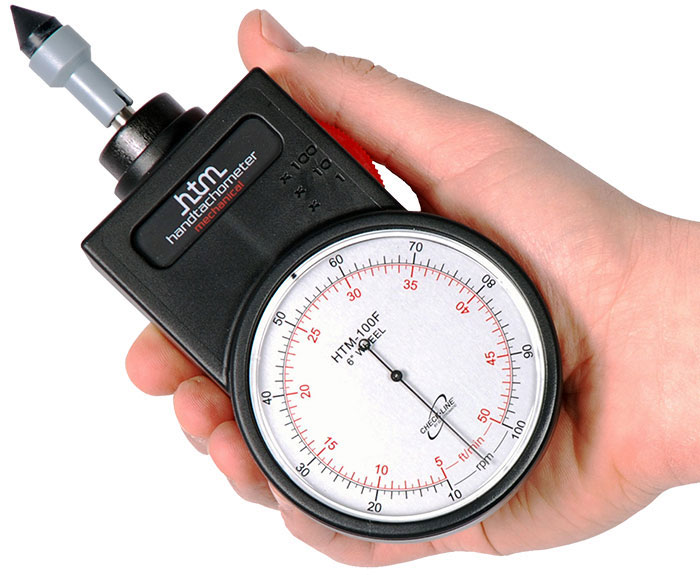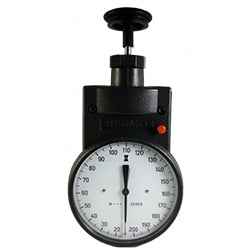Exploring the Features and Advantages of a Tachometer: A Comprehensive Overview for Car Fanatics
From providing real-time data on engine rate to aiding in maximizing gear changes, the tachometer offers as even more than just a dial on the dashboard. Its multifaceted features not just boost driving experience yet also play a pivotal function in keeping engine health and efficiency.
Comprehending the Essentials of a Tachometer
In the world of automotive instrumentation, recognizing the basics of a tachometer is essential for any car fanatic looking to delve right into the details of engine efficiency monitoring. A tachometer, commonly presented on the dashboard of an automobile, determines the engine's changes per min (RPM)
Tachometers commonly have actually a scale noted in changes per min, with a redline suggesting the optimum speed at which the engine can safely run (tachometer). This info is vital for avoiding engine damages and enhancing equipment moving for hand-operated transmissions. Furthermore, tachometers can assist in diagnosing engine issues such as misfires or a falling short ignition system by identifying uneven RPM readings
Importance of Checking Engine Rate

The engine rate, determined in revolutions per min (RPM), suggests exactly how quickly the engine's crankshaft is turning. Keeping track of engine speed is especially crucial throughout equipment shifts, as it helps chauffeurs determine the ideal time to transform equipments for smooth velocity and efficient fuel intake.
In addition, tracking engine speed can also offer useful insights into the general health of the car. In general, keeping an eye on engine rate with a tachometer is a fundamental technique that can improve driving performance, lengthen engine life, and ensure a much safer and more delightful driving experience.
Enhancing Efficiency With Equipment Shifts
Enhancing efficiency via calculated gear changes is a vital facet of maximizing an automobile's performance and power outcome. Correct equipment moving ensures that the engine runs within its ideal power band, permitting for smooth velocity and improved fuel economic climate. When shifting gears, it is essential to pay interest to the engine rate indicated on the tachometer. By keeping an eye on the engine revolutions per minute (RPM), motorists can figure out the most favorable minutes to upshift or downshift for optimal performance.

To achieve peak performance via gear shifts, vehicle drivers must exercise smooth and timely transitions in between equipments, matching engine rate with roadway speed to harness the complete possibility of their car's powertrain.
Optimizing Performance With a Tachometer
Understanding the art of gear changing in high-performance vehicles not just boosts driving experience yet also plays an essential duty in taking full advantage of efficiency with a tachometer. tachometer. By paying attention to the tachometer readings, drivers can enhance their gear changes to run within the engine's most efficient range. When accelerating, moving gears at the ideal RPM shown by the tachometer can prevent the engine from straining try this site or underperforming, resulting in enhanced fuel efficiency and overall performance
Furthermore, a tachometer aids chauffeurs stay clear of unneeded revving, which not just squanders gas but additionally puts unnecessary strain on the engine. Continually keeping an eye on the tachometer while driving permits smoother equipment transitions, decreasing deterioration on the transmission system over time.

Advanced Tips for Tachometer Use
Enhancing driving precision through adept tachometer interpretation is key to maximizing car performance. To look into advanced tips for tachometer usage, think about incorporating the usage of change lights. Shift lights are visual indicators that illuminate when it's time to move equipments based on engine transformations per min (RPM), allowing for smooth equipment modifications without constantly keeping track of the tachometer. Furthermore, exercising heel-and-toe downshifting technique can be valuable when intending for smoother transitions in between equipments. This technique includes utilizing both the brake and accelerator pedals at you can try these out the same time while downshifting, assisting to maintain engine RPM and prevent jerky activities. Utilizing an efficiency tachometer with customizable setups can offer real-time data customized to certain driving choices or vehicle modifications. By fine-tuning change factors and setting warning limits, vehicle drivers can optimize velocity and engine efficiency while lessening the threat of over-revving. These innovative methods, when coupled with a deep understanding of tachometer analyses, can boost driving efficiency and overall driving experience.
Final Thought
Finally, the tachometer offers as an important device for vehicle enthusiasts to keep an eye on engine speed, boost efficiency with informative post equipment changes, and maximize effectiveness. By comprehending the features and advantages of a tachometer, chauffeurs can optimize their driving experience and extend the life expectancy of their automobile. Using sophisticated suggestions for tachometer use can further enhance driving skills and overall efficiency on the roadway.